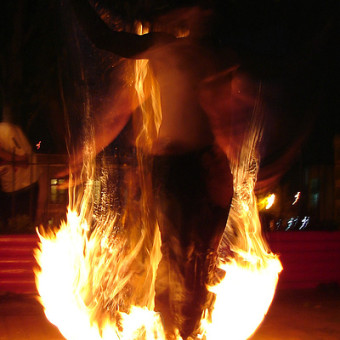There has been a slowly emerging trend in fiction over the last fifteen years or so. Replacing the simple goodness of protagonists such as King Arthur and the simpleminded goodness of heroines such as Snow White, we have a growing contingent of more complicated, morally ambiguous characters taking center stage in our stories. Dubious heroes such as Batman and John Constantine exist only to fight off worser evils (and often their “good deeds” are almost coincidental to their battles against their own, personal demons). The traditional antagonists of our childhood have taken on new shades of human character and societal misuse, as in the cases of the Wicked Witch of the West in Wicked or Morgan Le Fay in The Mists of Avalon. We have a bevy of new “bad guys” at center stage, some of them irresistible in spite of their villainy (Thomas Crown, for example, or Kevin Spacey in The Usual Suspects), and some without any attempt whatsoever to justify their actions through sympathetic moments or incidental benefits to humanity, as is the case with Robert Altman’s 1992 film The Player. Why, as a culture, are our stories evolving in such a way? What is the appeal in watching the bad guys win?
The Kali Principle
A great deal of emphasis is given in our stories to tales of magical creation. Wishes are granted, and the coveted item appears out of thin air. The birth of a child, in many religions, is the beginning of salvation. The creation of a building, or an artifact, or a concrete set of precepts is often the turning point where a tale of misery becomes a valuable lesson. As we go through our lives, working to live up to our own, personal, mythologies, we carry these lessons with us and aim to build and create that which will lead us to wisdom, happiness, and a sense of righteous fulfillment at the end of our time here.
Much less often is the power of death and destruction upheld as a step along this path. Usually, tales of death are only made meaningful when death is magically overcome, or serves the purpose of furthering a noble cause. Destruction is saved for the punishment of the guilty or as a catalyst for greater achievement. Something to be avoided at all costs, but if encountered, to be nobly borne and overcome. What we rarely hear are stories of the beauty and necessity of destruction as a meaningful, sacred thing in itself. The recognition that destruction is a crucial part of all our lives if we are to continue to grow, that death creates the fertile ground for new growth, seems to have been left behind with the harvest festivals and strange, heathen temples of the east. We are a people of creation and building; we never look back. We just continue to build up and out on the basis of what came before. But what if our foundation was built so long ago that the core is rotten? Can we continue to build external supports indefinitely, attempting to shore up that which wants to fall?

